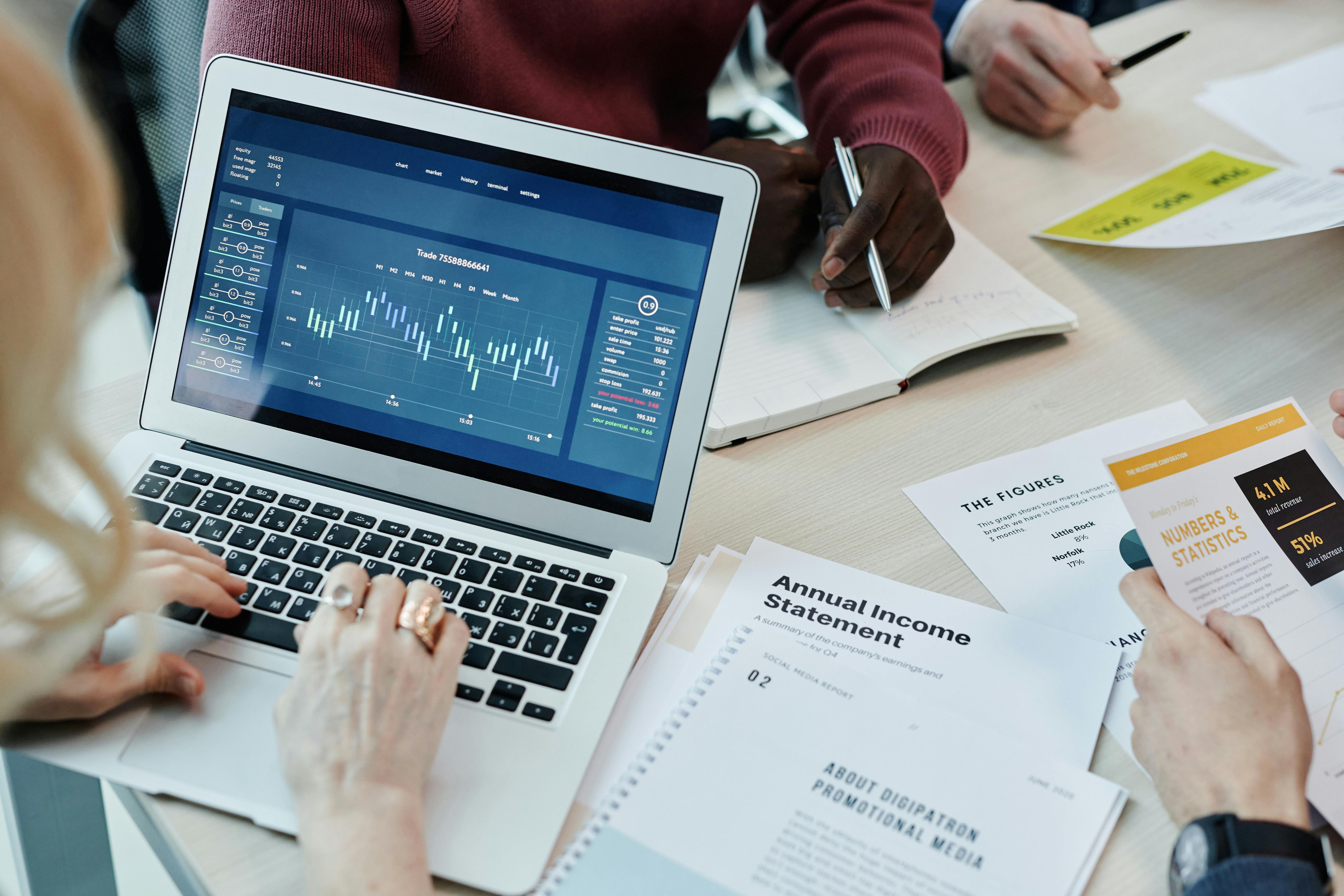By David Stewart, July 17, 2025
In the ever-evolving world of digital finance, few cryptocurrencies have demonstrated the resilience and real-world promise of XRP. With regulatory clarity, global partnerships, and a laser focus on cross-border payments, XRP is entering a new phase—one that could see it rise as a dominant force in global finance.
The Main points✅ Regulatory Breakthrough: The Ripple-SEC CaseFor years, XRP's growth was partially shadowed by the U.S. Securities and Exchange Commission’s (SEC) lawsuit against Ripple Labs, alleging that XRP was an unregistered security. That cloud lifted in 2023, when a landmark ruling declared that XRP was not a security when sold on exchanges. This outcome provided the regulatory clarity that investors had been demanding—and marked a major turning point.Today, XRP enjoys a level of legal certainty that many other tokens still lack, making it more attractive to institutional investors, hedge funds, and regulated exchanges alike.🌍 Global Utility in ActionUnlike many cryptocurrencies that struggle with real-world application, XRP has a clear use case: solving the inefficiencies of cross-border payments. RippleNet, Ripple’s global financial network, is already being used by over 300 financial institutions across 40+ countries. XRP acts as a bridge currency, facilitating near-instant transfers with low fees and high scalability.With SWIFT still reliant on outdated infrastructure and high fees, many believe Ripple's blockchain-based system offers a much-needed alternative. The result? Growing adoption, especially in emerging markets where remittance corridors are vital.🔗 Tokenomics & ScarcityXRP has a fixed supply of 100 billion tokens, with no mining involved. Unlike inflationary tokens or fiat currencies that can be printed endlessly, XRP’s deflationary model—combined with transaction-based burning—adds long-term scarcity.As utility grows and more XRP is used in actual transactions, the circulating supply gradually declines, contributing to upward pressure on price.📈 Technical Indicators & Institutional InterestXRP’s chart has shown strong accumulation patterns since its regulatory win, with analysts noting a consistent increase in wallet activity and exchange withdrawals—indicators of long-term holding.Institutional-grade custody services like Fidelity Digital Assets and Fireblocks now support XRP, signaling growing confidence from the world’s largest financial players. Moreover, XRP has been quietly integrated into central bank digital currency (CBDC) pilot programs, hinting at a broader role in future financial infrastructure.🔮 The Road AheadAs the world transitions from traditional banking to blockchain-powered finance, XRP is strategically positioned at the heart of this shift. With a clear purpose, legal clarity, and ongoing global adoption, XRP isn’t just surviving the crypto winter—it’s preparing to thrive in the digital spring.Whether you're an institutional investor seeking utility or a retail holder looking for long-term growth, XRP is increasingly impossible to ignore.
In a digital economy defined by volatility and speculation, XRP stands out not merely for its price movements, but for its purpose. Born out of a vision to redefine how money moves across borders, XRP is more than just another cryptocurrency—it’s a digital asset backed by utility, partnerships, and now, legal clarity.
In 2025, as the global financial system grapples with outdated infrastructure, rising remittance demands, and the rapid emergence of central bank digital currencies (CBDCs), XRP is uniquely poised to be a cornerstone of the next generation of finance. For years, its growth was throttled by legal uncertainty and market doubt. But with the cloud of litigation lifted, global adoption rising, and infrastructure improving, XRP appears ready to reclaim—and even exceed—its previous highs.
This long-form article will examine the multi-layered reasons XRP is set for major growth: from its early roots and legal hurdles to its technical edge, market utility, and the macroeconomic forces converging in its favor. Whether you're a seasoned investor, a curious analyst, or a skeptic looking for substance, this exploration of XRP will uncover what makes it one of the most resilient and strategically positioned assets in the digital era.
The story of XRP begins with Ripple Labs, founded in 2012 with the vision of revolutionizing global money transfers. Unlike Bitcoin, which was created as a decentralized alternative to fiat currencies, Ripple’s mission was pragmatic: fix what’s broken in the banking sector—specifically, cross-border transactions.
Traditional remittances rely on the SWIFT system, a messaging network that facilitates international bank transfers. But SWIFT is slow (often taking 3–5 business days), expensive (with fees ranging from $10 to $50 per transaction), and riddled with errors (about 6% of transfers fail or are delayed). Ripple Labs wanted to build a faster, cheaper, and more transparent alternative.
At the heart of this vision lies XRP, a digital asset designed not to replace fiat money, but to act as a bridge currency. It facilitates quick settlement between different currencies, allowing banks to avoid holding large amounts of foreign capital in nostro/vostro accounts.
Unlike Bitcoin or Ethereum, XRP is not mined. Instead, all 100 billion XRP were created at inception, and transactions are validated by a network of trusted nodes (validators), not energy-intensive proof-of-work miners. This gives XRP significant advantages in terms of speed (3–5 second settlement), scalability (1,500+ transactions per second), and cost (less than $0.01 per transaction).
Ripple Labs initially distributed XRP through direct sales to institutions, partnerships with exchanges, and programmatic releases via escrow. Despite criticism over centralization, Ripple placed 55 billion XRP in escrow, committing to release only 1 billion tokens per month and returning unused portions—creating a predictable, transparent supply schedule.
XRP first made headlines in 2017, when it exploded from under $0.01 to over $3.84 during the crypto bull run. At its peak, XRP was the second-largest cryptocurrency by market cap, behind only Bitcoin.
But its fall came just as quickly. By 2018, prices had plummeted amid a broader market crash, and skepticism grew around Ripple’s control of the XRP supply. The biggest blow, however, came in December 2020, when the U.S. Securities and Exchange Commission (SEC) filed a lawsuit alleging that XRP was sold as an unregistered security.
This lawsuit triggered the delisting of XRP on major U.S. exchanges like Coinbase and Binance.US, wiping out billions in market value. While international trading continued, XRP became a digital pariah in the United States, with institutional investors steering clear and analysts downgrading its prospects.
But the tide turned in 2023.
The lawsuit filed by the SEC in 2020 was one of the most significant legal battles in crypto history. The Commission claimed that Ripple's sale of XRP to fund its operations constituted an illegal offering of securities under the Howey Test—a legal standard derived from a 1946 Supreme Court case used to determine whether an asset qualifies as a security.
Ripple argued back: XRP was not a security, but a digital utility token with an established use case in cross-border settlements. It was decentralized enough, they claimed, and had long been used on exchanges independently of Ripple’s actions.
In July 2023, Judge Analisa Torres delivered a partial victory for Ripple. The court ruled that while Ripple’s institutional sales of XRP may have violated securities laws, programmatic sales (on exchanges) and secondary market trading of XRP did not constitute securities transactions.
This distinction was monumental. It meant that XRP itself is not a security, even if some of Ripple’s past sales required regulatory oversight. Exchanges could relist XRP, investors could re-enter the market with legal clarity, and institutions could now build on XRP Ledger infrastructure without fear of litigation.
Following the ruling, major U.S. exchanges like Coinbase, Kraken, and Bitstamp quickly relisted XRP, prompting a surge in both volume and price. XRP jumped over 80% in 24 hours after the ruling, signaling a renewed confidence in the asset’s future.
Institutional investors began eyeing XRP again—this time not as a speculative token, but as a compliant and functional bridge asset. The chilling effect of the lawsuit had lifted, and XRP emerged from its legal winter leaner, stronger, and ready to compete.
One of XRP’s most powerful differentiators in the crypto space is that it isn’t just speculative—it has tangible, ongoing use cases in international finance.
While Bitcoin positions itself as "digital gold" and Ethereum is the foundation for decentralized applications, XRP is focused on one primary thing: solving cross-border payments. And in this regard, it's winning.
Ripple’s flagship product, RippleNet, is a global payment network that connects financial institutions and enables frictionless money transfers across borders. What makes RippleNet powerful is its integration with On-Demand Liquidity (ODL)—a system that uses XRP as a bridge asset to settle transactions in seconds without the need for pre-funded accounts.
Let’s say a bank in Mexico wants to send money to a partner in the Philippines. Traditionally, they’d need to hold Philippine pesos in a local bank account to facilitate the transfer—a costly and capital-intensive process. With ODL, that bank can simply convert Mexican pesos to XRP, send it across the XRP Ledger in seconds, and have the recipient instantly convert it into pesos.
This eliminates the need for nostro/vostro accounts, frees up trapped liquidity, and dramatically lowers transaction costs. Banks and remittance services can move capital faster, cheaper, and with complete transparency.
Ripple has made major inroads in Southeast Asia, a region with one of the highest remittance volumes in the world. In countries like the Philippines, Thailand, and Vietnam, RippleNet is helping money service providers like Tranglo, SBI Remit, and GCash reduce the time and cost of remittances.
SBI Holdings (a key Ripple partner and major investor) has led the charge in Japan, using Ripple technology to power remittances between Japan and countries like the Philippines and Vietnam. These corridors move billions of dollars annually.
In emerging markets like Nigeria, South Africa, and Kenya, where traditional banking infrastructure is lacking, Ripple’s tech enables affordable and inclusive financial services. Startups and banks are using RippleNet to tap into diaspora remittances from the U.S. and Europe—money that is vital to household income and national GDP.
Ripple has expanded aggressively in Latin America, especially in Brazil, Mexico, and Argentina, where economic instability has created demand for fast and affordable cross-border solutions. Bitso, a major Latin American crypto exchange, uses ODL to process payments between the U.S. and Mexico.
One of the most significant emerging stories in XRP’s growth narrative is its potential role in central bank digital currencies (CBDCs). Ripple is currently working with over 10 central banks, including Bhutan and Palau, to pilot CBDCs on the XRPL (XRP Ledger)—a permissionless, energy-efficient blockchain that can be customized for sovereign use.
Unlike Ethereum or private blockchains, XRP Ledger offers a balance of decentralization and performance that governments can tailor to their needs. As central banks explore digital currencies, Ripple is positioning itself as the infrastructure provider—and XRP could become the underlying asset that connects these CBDCs internationally.
Understanding the tokenomics behind XRP is essential for appreciating its potential growth. While Bitcoin relies on mining and Ethereum is transitioning to staking, XRP was created with a finite supply and a transaction-burning mechanism that introduces deflationary pressure over time.
At its launch, XRP was pre-mined with a fixed total supply of 100 billion tokens. This is all there will ever be. Unlike inflationary currencies or cryptocurrencies with no supply cap, XRP’s supply is immutable—which means long-term scarcity is built into the asset.
Of the 100 billion XRP:
Ripple’s escrow system was designed to reassure the market that Ripple Labs could not dump large amounts of XRP and destabilize the market. It provides a predictable release schedule and transparency around supply.
Every time a transaction is made on the XRP Ledger, a small amount of XRP is burned—permanently destroyed. While the fee is minuscule (often less than 0.001 XRP), this mechanism ensures that the total circulating supply decreases over time.
At scale, especially if XRP is widely used for remittances and CBDCs, this burn rate could accelerate, introducing deflationary pressure and increasing scarcity. This is in direct contrast to fiat currencies, which tend to lose purchasing power over time due to inflation.
As of 2025, XRP is held by over 4.5 million wallets, with healthy distribution patterns. While Ripple Labs still holds a significant amount, non-affiliated wallets and institutions are steadily increasing their share. Analysts often track whale activity and exchange withdrawals to gauge long-term sentiment—and recent data shows large XRP holders are accumulating, not distributing.
Unlike Bitcoin’s proof-of-work system that consumes more energy than many countries, the XRP Ledger uses a consensus algorithm that requires minimal energy. In an age of ESG investing and carbon accountability, this green advantage could be a decisive factor in enterprise and governmental adoption.
In the competitive ecosystem of digital assets, XRP stands out not just because of its speed or cost-effectiveness, but because of its purpose-driven design. To truly appreciate XRP’s unique position in the crypto economy, it’s helpful to compare it directly with other high-profile cryptocurrencies.
Bitcoin was the first successful cryptocurrency, and it remains the most valuable by market cap. It was designed as a decentralized alternative to fiat currency, offering a limited supply (21 million BTC) and protection against inflation.
However, Bitcoin is ill-suited for daily payments or financial infrastructure for several reasons:
These limitations make BTC a great store of value ("digital gold"), but a poor medium for real-time financial transactions, especially across borders.
Ethereum brought about the era of decentralized finance (DeFi) and smart contracts. It powers thousands of decentralized apps (dApps) and is the backbone of NFTs, tokenization, and DeFi protocols.
But like Bitcoin, Ethereum suffers from significant drawbacks when compared to XRP:
Stellar is often compared to Ripple due to shared early developers and similar goals. Stellar's XLM token also aims to facilitate cross-border payments.
However, Ripple has a major edge in:
XRP also has a much larger ecosystem and network effect, and Ripple’s focus on enterprise-level solutions makes it more scalable for high-volume use.
Beyond crypto, Ripple is competing directly with SWIFT, the interbank messaging protocol that has powered global finance for decades. SWIFT is not a payment system—it’s a messaging protocol that tells banks where to send money.
Ripple offers real-time settlement with built-in messaging, liquidity sourcing, and automatic FX conversion. While SWIFT is moving toward improvements like SWIFT GPI, it still lacks the blockchain-native speed and efficiency that XRP delivers.
One of the most significant shifts in XRP’s trajectory occurred after the 2023 legal ruling that clarified its status in the U.S. as not a security when sold on exchanges. This verdict didn’t just lead to a price rally—it brought institutional investors back to the table.
Shortly after the ruling, major U.S. exchanges relisted XRP:
These relistings signaled more than just technical access—they marked a return to legitimacy in the eyes of both the public and institutional investors.
Another key institutional milestone was the return of crypto custody providers. These firms hold digital assets on behalf of institutional clients, ensuring secure, regulatory-compliant storage.
These developments allow family offices, hedge funds, and even pension funds to gain exposure to XRP in a compliant, secure way.
While Bitcoin and Ethereum have long had institutional investment products like Grayscale Trusts and ETFs, XRP was shut out during the lawsuit period. Now, that’s changing.
This movement reflects a broader trend: XRP is no longer being valued only as a speculative token—but as an infrastructure asset with long-term upside and real utility.
Ripple Labs continues to announce and expand global partnerships with:
Ripple’s growing presence in the ISO 20022 messaging standard ecosystem—used by banks to communicate—also gives XRP a strategic advantage. As legacy financial systems modernize, XRP’s compliance-ready design makes it a strong contender for integration.
XRP’s price action over the years has been one of the most volatile and debated in the entire crypto space. From its meteoric rise in 2017 to its stagnation during the legal battle, to its rebound in 2023 and beyond—XRP has seen it all.
Understanding the technical landscape, along with market psychology and wallet behavior, is crucial to evaluating XRP’s future growth potential.
Despite not reclaiming its 2018 ATH (All-Time High) yet, the token's trajectory shows a pattern of resilience, with significant accumulation at support zones.
Traders often analyze XRP’s movements through a combination of volume, RSI (Relative Strength Index), moving averages, and Fibonacci retracements. Here’s a simplified breakdown:
Data from on-chain analytics platforms shows a pattern of steady whale accumulation. Wallets holding more than 10 million XRP have been increasing their holdings, often withdrawing from exchanges and moving to long-term storage.
This is typically a bullish sign, suggesting that major holders expect future price appreciation and are not looking to sell at current levels.
Meanwhile, retail participation has also increased, with more than 4.5 million unique wallets holding XRP as of mid-2025.
Various predictive models, including stock-to-flow, Metcalfe’s law-based models, and sentiment-based projections, place conservative long-term XRP targets in the range of $3–$5 over the next 2–3 years. More aggressive analysts, particularly those banking on global remittance dominance, see potential for $10+ valuations, contingent on mass adoption.
However, price appreciation will ultimately depend on utility, liquidity, and integration with financial systems—not just hype.
Despite its advantages and renewed momentum, XRP faces several challenges—both external and internal—that investors and observers should acknowledge. Growth is not guaranteed, and the crypto landscape is notoriously unforgiving to complacency.
While Ripple secured a partial victory in 2023, the legal saga isn’t completely over. The court allowed the SEC’s claims around institutional sales to proceed to trial. Ripple may still face fines, settlements, or operational constraints depending on the final outcome.
Additionally, U.S. crypto regulation remains in flux. Future legislation could impose new rules on digital asset sales, custody, or exchange listings—impacting XRP’s accessibility or attractiveness to U.S. investors.
Despite improvements in validator distribution and decentralization, XRP still faces criticism for being too closely tied to Ripple Labs. Unlike Bitcoin’s fully open and community-run ethos, XRP’s initial distribution and Ripple’s large holdings have created persistent concerns among purists.
While Ripple has taken steps to minimize its influence (via escrow and open-source developments), the optics still affect XRP’s credibility with some investors.
Ripple is not alone in targeting the cross-border payments market. Competitors include:
While Ripple has first-mover advantage and infrastructure in place, the payments industry is hyper-competitive, and banks may ultimately prefer private, permissioned systems or government-backed digital currencies.
XRP, like all cryptocurrencies, is subject to wild price swings, regulatory news shocks, and global macroeconomic conditions. A market downturn, exchange delisting, or unforeseen geopolitical event could trigger sudden drops in liquidity or demand.
Investors and institutions entering the space must be prepared for short-term volatility, even if they believe in XRP’s long-term prospects.
Though XRP Ledger is robust, scaling to global volumes, integrating with CBDCs, and maintaining security at high throughput levels is an ongoing challenge. Additionally, Ripple needs to stay ahead of blockchain innovation, including developments in Layer-2s, interoperability protocols, and AI-driven financial automation.
Global payments are in the midst of a tectonic shift. As technology and regulation evolve, the infrastructure that underpins global money movement is being rebuilt from the ground up. XRP—and the Ripple ecosystem—are at the forefront of this transformation.
According to McKinsey & Co., over $150 trillion in cross-border payments flow through the global financial system annually. This includes:
The current system relies on SWIFT messaging, correspondent banking, and FX intermediaries. This creates friction, adds cost, delays settlement, and introduces a lack of transparency that affects both institutions and individuals.
ISO 20022 is a new financial messaging standard adopted by banks and governments worldwide. It improves upon SWIFT by introducing richer data, interoperability, and automation.
Ripple is one of the few crypto-native companies that is ISO 20022-compliant, and XRP Ledger is already aligned with the message structure. This positions XRP to become a bridge asset for institutions transitioning to blockchain settlement under ISO protocols.
This standardization allows XRP to seamlessly integrate into core banking systems and central bank infrastructure—making it future-proof for institutional use.
Central banks in over 130 countries are exploring or developing digital currencies. Some, like China’s e-CNY, are already in circulation. However, one of the unresolved challenges is interoperability—how will these CBDCs communicate with each other?
Ripple has positioned itself to offer XRP Ledger-based infrastructure for CBDC issuance and connection. XRP itself is not a CBDC, but it is ideal for acting as a neutral settlement layer between sovereign digital currencies.
Use cases include:
If even a small fraction of CBDC transactions are bridged using XRP, it would trigger exponential demand for liquidity on the XRP Ledger.
As we look toward the next decade, XRP is positioned to play a key role in the re-engineering of money movement, particularly in areas where speed, cost-efficiency, and compliance are critical.
Ripple Labs is executing on a global growth plan, with key focuses including:
A Ripple IPO is also widely expected. Once public, Ripple Labs could gain access to new capital, increasing its ability to scale, invest, and influence policy.
Industry analysts and crypto researchers are increasingly bullish:
Price forecasts vary, but long-term projections (barring major global shocks) often include targets like:
Of course, price is never guaranteed. But for those analyzing fundamentals, XRP's upside remains structurally supported.
After weathering one of the longest and most high-profile legal battles in crypto history, XRP has emerged with something most digital assets lack: clarity.
It has:
✅ Real-world use cases in the global payments industry
✅ Strategic partnerships with hundreds of financial institutions
✅ Legal certainty that supports both retail and institutional adoption
✅ Integration with emerging CBDC and ISO 20022 frameworks
✅ Fixed supply, a deflationary burn mechanism, and low energy usage
✅ A robust developer and enterprise ecosystem powered by Ripple Labs
Despite these fundamentals, XRP’s current market cap remains a fraction of assets with less utility and more speculation. This mismatch between intrinsic value and market valuation is why many believe XRP is not just a promising project—but one of the most undervalued and overlooked digital assets in the world.
As the world moves toward a digitized financial system, XRP isn’t just adapting—it’s leading.
In an ecosystem often dominated by hype cycles and fleeting trends, XRP has consistently delivered infrastructure, innovation, and institutional alignment. Whether you view it as a bridge currency, a cross-border settlement layer, or a macro hedge on the evolution of money, XRP has a role to play in the digital economy of tomorrow.
Disclaimer: This article is for informational purposes only and does not constitute financial advice. Always do your own research before investing in digital assets.







